NLRB Change-ups: The (Republican) Force Awakens
Miller & Martin PLLC Alerts | December 18, 2017
Author: William Trumpeter
President Trump has filled two vacant seats on the National Labor Relations Board (NLRB) since taking office, shifting the Board from a Democratic to a Republican majority.
With the most recent seat filled in late September by William Emanuel, the Board is working quickly to reverse several employer-adverse Obama-era decisions. In a two-day period last week, the NLRB reversed its prior course regarding three such decisions along with a 2004 policy that also favored employees.
Specifically, as discussed more fully below, the current Board scrapped the Browning-Ferris joint employer test, provided a new standard for reviewing employee handbook provisions, reversed course on employer bargaining obligations with unions, and returned to a standard that makes it more difficult for unions to organize “micro” bargaining units.
- Companies are “joint employers” when they exercise direct and immediate control over workers.
On December 14, 2017, in Hy-Brand Industrial Contractors, Ltd. and Brandt Construction Co., 365 NLRB No. 156 (2017), the Board reversed its decision in Browning-Ferris Industries, 362 NLRB No. 186 (2015), in which it had implemented a broader definition of “joint employment.” In Browning-Ferris, the Board ruled that a business could be considered a “joint employer” if it exercised indirect control, or even the ability to exert such control, over workers. In the Hy-Brand/Brandt decisions, the Board majority returned to a narrower definition of “joint employment,” stating that “[a] finding of joint-employer status shall once again require proof that putative joint employer entities have exercised joint control over essential employment terms (rather than merely having ‘reserved’ the right to exercise control) … and joint-employer status will not result from control that is ‘limited and routine.’” This ruling comes as a huge relief to many employers, especially franchisors who faced a heightened threat of liability for actions by their franchisees under the Obama-era Browning-Ferris decision.
- In evaluating the legality of handbook policies, the Board will consider the potential impact of the policy on worker rights together with the employer’s legitimate justifications for the policy.
In another December 14, 2017 ruling, The Boeing Company, 365 NLRB No. 154 (2017), the Board erased its 2004 standard for weighing the legality of employee handbook policies that it had established in Lutheran Heritage Village-Livonia, 343 NLRB 646 (2004). In Lutheran Heritage, the Board held that a policy was illegal if employees could “reasonably construe” it as prohibiting them from exercising their right to band together for mutual aid and protection as provided in Section 7 of the NLRA. The Obama-era NLRB rejected a number of handbook policies by applying the Lutheran Heritage standard, including policies that prohibit criticism of the employer on social media, that ban recordings in the workplace, and that dictate standards of employee behavior, such as calling for respect of co-workers. Now, the Board will weigh the “nature and extent” of the policy’s potential impact on employee NLRA-protected rights with the employer’s “legitimate justifications associated with the rule [or policy].”
- Employers can change policies without union approval if they previously have taken similar actions.
On December 15, 2017, in Raytheon Network Centric Systems, 365 NLRB No. 161 (2017), the Board issued a ruling reversing a 2016 decision holding that employers must bargain with unions before implementing any changes to employment conditions, even if the company has a history of making similar changes.
By way of background, in 1962, the U.S. Supreme Court ruled that union employers cannot make unilateral changes to employment terms and conditions unless the employer first notifies the union and allows it an opportunity to bargain over the proposed change. The Board ruled two years later that a revision to employment terms and conditions is not a “change”, if the revision is similar in kind and degree with an established past practice. However, the Board reversed this prior course last year in E.I. du Pont de Nemours, 364 NLRB No. 113 (2016) (“DuPont”), in which it held that actions consistent with an established past practice do constitute a change, requiring the employer to provide the union with notice and opportunity to bargain prior to implementation. The Board’s December 15 Raytheon Network Centric Systems decision reverses DuPont, and re-establishes the position it previously had maintained since 1964.
- Micro bargaining units must be “sufficiently distinct” from excluded employees.
Last, but not least, the Board, on December 15, 2017, nixed a 2011 ruling handed down in Specialty Healthcare and Rehabilitation Center of Mobile, 357 NLRB 934 (2011) that allowed “micro-units” of workers to unionize. In Specialty Healthcare, the Board held that employers challenging “micro-units” must show that the “excluded employees share an overwhelming community” with the identified group. This standard led to an influx of smaller bargaining units over the past six years, which employers argued fractured the workplace.
In last week’s decision in PCC Structurals, Inc., 364 NLRB No. 160 (2017), however, a majority of the Board found that the 2011 Specialty Healthcare ruling gave unions too much power to determine the makeup and scope of bargaining units, particularly when the union lacks support from a majority of an employer’s workforce. The Board majority also stated that the Specialty Healthcare decision effectively made “the extent of union organizing ‘controlling’” and failed to “‘assure’ to employees ‘in each case’ their ‘fullest freedom’ in the exercise” of their rights to organize.
In returning to its prior approach, the Board indicated that going forward it will examine whether the petitioned-for employees share a community of interest “sufficiently distinct” from excluded employees so as to warrant their own bargaining unit. So, instead of employers having to show that the proposed micro-unit excludes “overwhelmingly similar” workers, the proposed micro-unit will have to show that it is “sufficiently distinct” from the rest of the employer’s workforce in order to justify the micro-unit.
As always, please feel free to contact Bill Trumpeter, or any other member of our Labor & Employment Law Practice Group for more information about any of the topics addressed in this alert.

